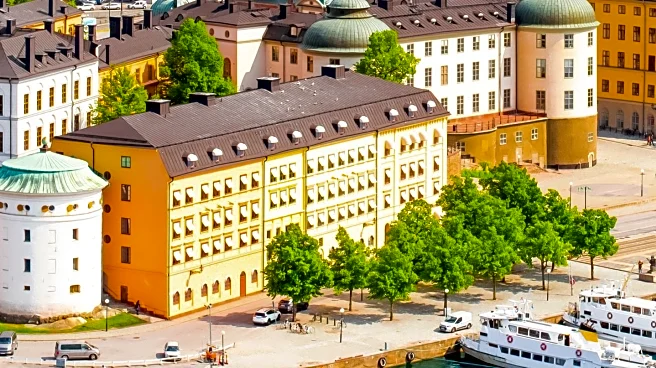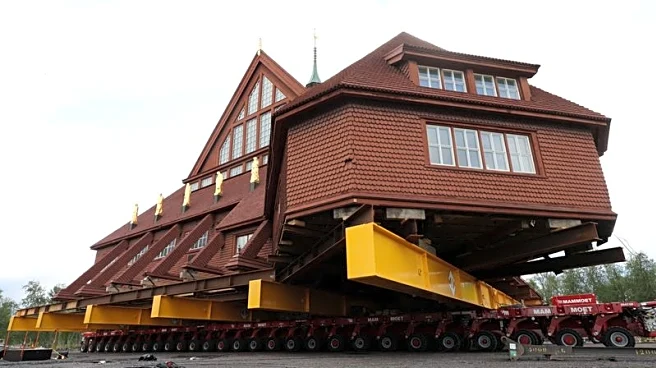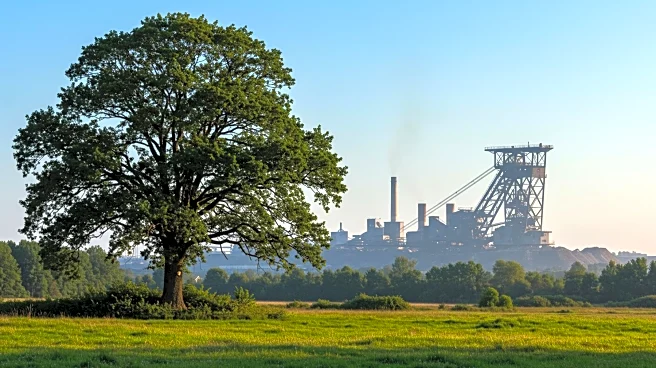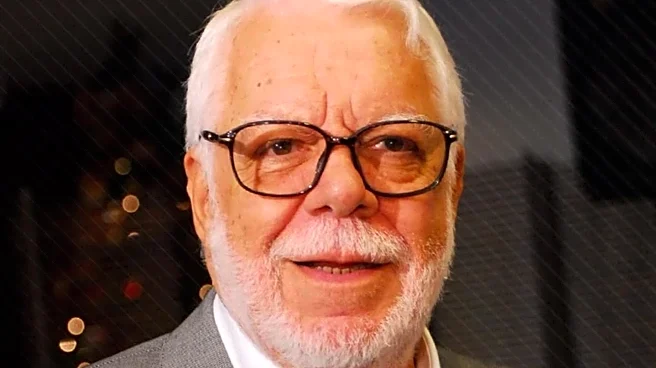What is the story about?
What's Happening?
The Kiruna Church, a beloved wooden Swedish Lutheran church, is being relocated due to the expansion of the world's largest underground iron-ore mine threatening to engulf the town of Kiruna, Sweden. The church, known for its neo-Gothic exterior and Sami-inspired design, is being moved 5 kilometers east to a new city center. This relocation is part of a broader effort to move Kiruna's town center, which has been underway since 2004, as the mine's expansion has caused structural damage to buildings and roads. The church's move is a highly choreographed event, featuring musical performances and a livestream by Sweden's national broadcaster, SVT.
Why It's Important?
The relocation of Kiruna Church highlights the impact of industrial activities on local communities and cultural heritage. The expansion of the mine poses a threat not only to the town's infrastructure but also to the traditional reindeer migration routes, affecting the livelihood of the Sami Indigenous people. The move underscores the challenges faced by communities in balancing economic development with cultural preservation and environmental sustainability. It also reflects the engineering feats required to preserve historical landmarks in the face of industrial expansion.
What's Next?
The relocation of Kiruna Church is expected to conclude with its reopening at the new location by the end of 2026. The broader town relocation project will continue, with additional buildings being moved to ensure safety from the mine's expansion. The event has drawn significant attention, with thousands of spectators and media coverage, indicating ongoing public interest in the preservation of cultural heritage amidst industrial growth. The Sami community may continue to advocate for the protection of their traditional lands and migration routes.
Beyond the Headlines
The relocation of Kiruna Church raises ethical questions about the responsibility of corporations in preserving cultural heritage and supporting Indigenous communities. The involvement of LKAB, the state-owned mining company, in gifting the church and orchestrating its move, highlights the complex relationship between industry and community. The event also serves as a reminder of the potential long-term impacts of industrial activities on cultural and environmental landscapes.
AI Generated Content
Do you find this article useful?













